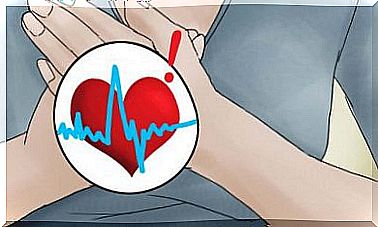Celiac Disease In Children And Adolescents: Symptoms And Diagnosis

Celiac disease is commonly known as “gluten intolerance,” and it often affects children and adolescents. Unfortunately, celiac disease is one of the most common diseases of the digestive system. It is estimated that it affects a large part of the world’s population, many unconsciously. The subject of this article is celiac disease in children and adolescents.
Celiac disease is more common in children and adolescents than in adults. Nearly one in 70 children is gluten intolerant. The disease is strongly associated with an inherited predisposition, i.e., carriers of a particular gene have a higher risk of developing the disease.
Today, people’s diets contain a lot of grain, and the amount of gluten in food is considerable. In this article, we tell you everything you need about celiac disease, especially in children and adolescents.
What exactly is celiac disease?

Celiac disease is a disease in which an autoimmune reaction to gluten occurs. The immune system responds to these proteins by producing changes in the digestive system.
Several studies show that celiac disease is significantly associated with a genetic component. This means that people carrying certain genes are at a higher risk of developing gluten intolerance. Still, symptoms do not always develop. Certain diseases also increase the risk of celiac disease; these include diabetes and Down syndrome.
What is the disease of celiac disease?
In the digestive system of people with celiac disease, there is an immune reaction after eating gluten. This immune reaction leads to an inflammatory state of the intestinal mucosa. Normally, the intestinal mucosa absorbs the necessary nutrients into the body, but when changes occur in the mucosa, the intestine is unable to absorb all of these nutrients. Thus, celiac disease causes malabsorption.
People with celiac disease can prevent symptoms or complications by following a strict gluten-free diet. If the doctor detects the disease in time and the person avoids eating gluten, the intestinal mucosa gradually recovers.
Celiac disease in children and adolescents

Celiac disease can break out at any age, but its symptoms vary with age. As mentioned above, damage to the intestinal mucosa is reversible if the disease is detected early. It is therefore advisable to be vigilant for symptoms, especially in children and adolescents, so that the diet can be tailored accordingly and possible complications avoided.
In young children, celiac disease often presents with diarrhea and persistent flatulence. Growth is also impaired, especially as the child begins to eat solid, gluten-containing foods.
In contrast, in older children and adolescents, symptoms typically include abdominal pain, vomiting, and constipation. They are also short for their age. In addition, rash and anemia may occur. All of these symptoms are due to the body’s inability to absorb from the food the nutrients it would need to grow.
How is celiac disease diagnosed in children?
In many cases, children and adolescents show no symptoms or go unnoticed. But because hereditary factors are known to be a decisive factor in the development of celiac disease, a child should be taken to a doctor for evaluation if one parent has celiac disease.
Celiac disease can be detected in several experiments. A blood test is usually taken to look for antibodies typical of celiac disease. If the test is positive, in some cases your doctor will take a small bowel biopsy. This is done by taking a small speculum through the mouth into the gut. A small sample is taken from the intestinal mucosa and analyzed in the laboratory.
Summary
Celiac disease occurs in children and adolescents in different ways depending on age. If you suspect this disease in your child, take the child to a doctor. Your doctor will perform the necessary tests and give advice on the diet of someone with celiac disease.









